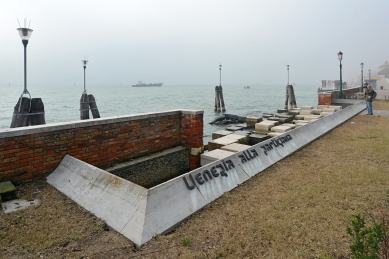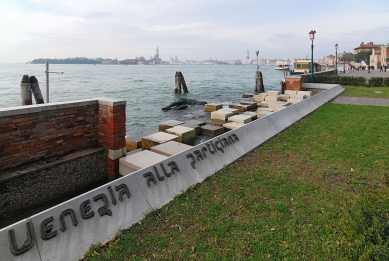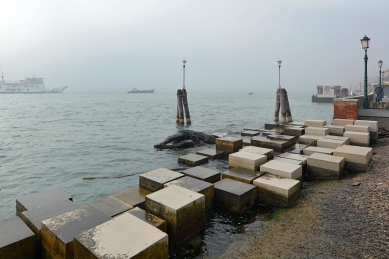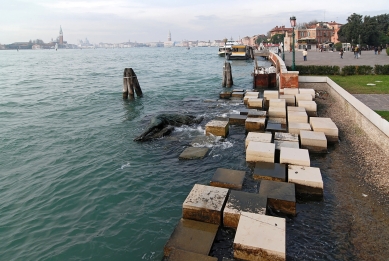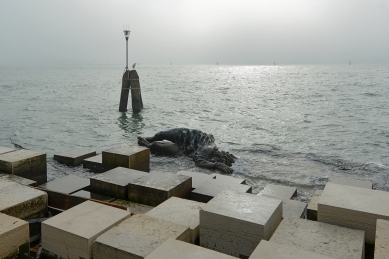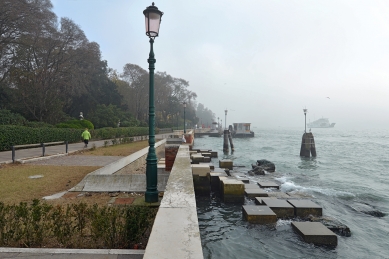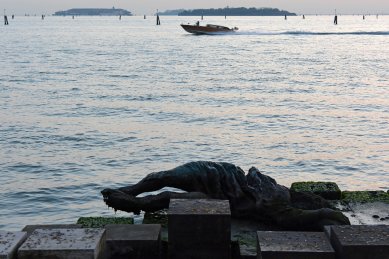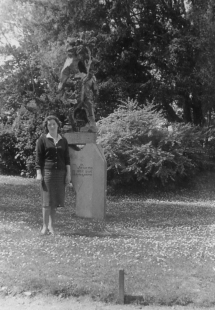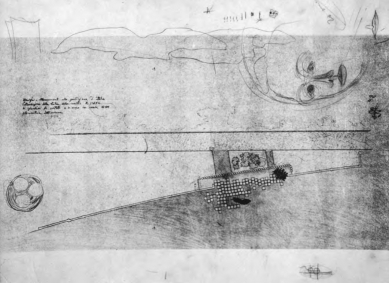
Monument to the Venetian Partisans
Monument to the Partisan

The city on the lagoon is intrinsically linked to the name of the Italian architect Carlo Scarpa, whose works developing the rich local tradition can be seen throughout Venice, but the highest concentration is in the eastern district of Castello in the area of the exhibition grounds of Giardini della Biennale, where Scarpa worked intensively from the 1940s to the 1970s. An easily overlooked installation is the monument to the partisans regularly submerged by sea water on the waterfront of the Seven Martyrs (Riva dei Sette Martiri). Although the monument is located at the main entrance to the exhibition grounds, many visitors pass it without noticing. Scarpa decided that the strongest way to view the statue would be to place it in an inaccessible spot at a lower level than the observer.
The expressive bronze statue pays tribute to the seven Venetian partisans publicly executed by the Nazis in 1944. The original terracotta statue of a woman by Leoncillo Leoncilli was installed in the Napoleonic Gardens at the southwest entrance to the Biennale grounds. However, on the night of July 27-28, 1961, the statue was damaged in a bombing attack. As a memento, only a fragment of the concrete pedestal designed by Scarpa remains on site, and the restored colored statue of the walking woman was moved to the Ca' Pesaro palace, where it can still be viewed today.
Three years after the attack, a competition took place, which was won by sculptor Augusto Murer, and Scarpa was subsequently commissioned to place the statue on the waterfront. Murer initially envisioned a floating platform, but ultimately stone blocks gradually disappearing below the water's surface were created. The water in the bay crashes against Istrian marble and regularly floods the twelve-hundred-kilogram bronze statue. The installation suggestively depicts the thin boundary between life and death, the proud victims defying the elements and reminding with each ebb tide.
Scarpa's design was not fully realized. A cylindrical wall firmly separating the sea from the land was not created, resulting in a gradual transition. Later, a vaporetto stop was established nearby the monument, disrupting the solemnity of the site.
The expressive bronze statue pays tribute to the seven Venetian partisans publicly executed by the Nazis in 1944. The original terracotta statue of a woman by Leoncillo Leoncilli was installed in the Napoleonic Gardens at the southwest entrance to the Biennale grounds. However, on the night of July 27-28, 1961, the statue was damaged in a bombing attack. As a memento, only a fragment of the concrete pedestal designed by Scarpa remains on site, and the restored colored statue of the walking woman was moved to the Ca' Pesaro palace, where it can still be viewed today.
Three years after the attack, a competition took place, which was won by sculptor Augusto Murer, and Scarpa was subsequently commissioned to place the statue on the waterfront. Murer initially envisioned a floating platform, but ultimately stone blocks gradually disappearing below the water's surface were created. The water in the bay crashes against Istrian marble and regularly floods the twelve-hundred-kilogram bronze statue. The installation suggestively depicts the thin boundary between life and death, the proud victims defying the elements and reminding with each ebb tide.
Scarpa's design was not fully realized. A cylindrical wall firmly separating the sea from the land was not created, resulting in a gradual transition. Later, a vaporetto stop was established nearby the monument, disrupting the solemnity of the site.
The English translation is powered by AI tool. Switch to Czech to view the original text source.
0 comments
add comment


